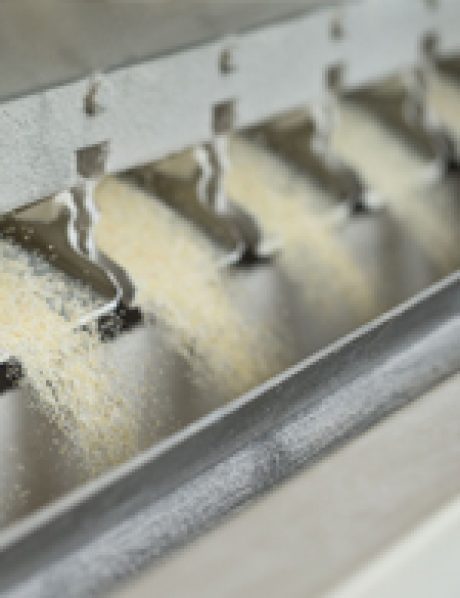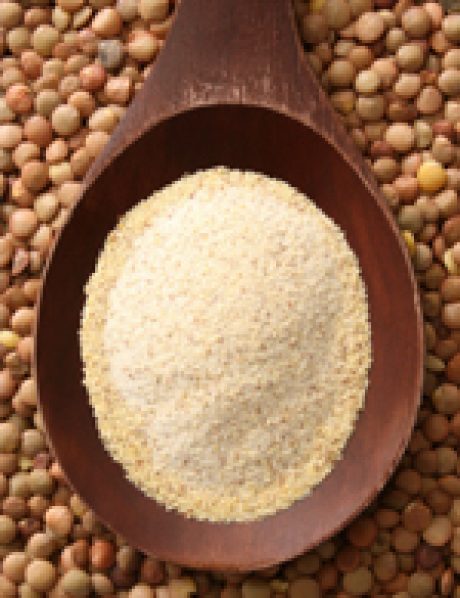Pulse Flours

Emerging Opportunities
The demand for pea and lentil flour is growing and expanding into a multitude of new end-use applications. Using flours, created using the whole or dehulled pulse seed, allows food manufacturers to leverage certain benefits over other ingredients, such as a strong nutritional and sustainability profile.

Formats
Unlike the wheat milling industry where flour is defined as a powder in which “not less than 98% passes through a cloth having openings not larger than 212 um” there is no standard definition for pulse flours. Lentils and peas can be ground to produce whole or dehulled flours. To produce a whole pulse flour, the entire seed can be milled as part of a continuous process or the hull can be collected as a co-product of dehulling, separately ground, then recombined with the flour at naturally occurring levels after milling. Due to the high concentration of fiber in the hull, whole flours have been found to exhibit larger average particle size and higher water absorption capacities1.
The type of mill will have a large impact on flour quality as each will break down the pulse seed by a different combination of forces with consequential changes in chemical, physical and functional characteristics such as starch damage, RVA pasting properties, and water absorption capacities1. Further changes in quality may also arise as a result of the applied milling configuration in addition to the natural variation within a given pulse type.
Functionality
The type of mill will have a large impact on flour quality as each will break down the pulse seed by a different combination of forces with consequential changes in chemical, physical and functional characteristics such as starch damage, RVA pasting properties, and water absorption capacities1. Further changes in quality may also arise as a result of the applied milling configuration in addition to the natural variation within a given pulse type, agronomic practices, environmental conditions, processing history and storage conditions.
The physicochemical composition of pulse flours themselves have also been reported to influence the functionality of pulse flours. For example, the particle size distribution of yellow pea flour has been found to affect its performance in food2. It follows that it is important to clearly characterize the flour and fully define the processing method when considering pulse flours for a particular application.
Interested in learning more?
Our team has a range of expertise from pulse processing and functionality to nutrition and sustainability.
1. Maskus, H., Bourre, L., Fraser, S., Sarkar, A., & Malcolmson, L. (2016). Effects of grinding method on the compositional, physical, and functional properties of whole and split yellow pea flours. Cereal Foods World, 61(2), 59–64. https://doi.org/10.1094/CFW-61...;
2. Bourre, L., Frolich, P., Young, G., Borsuk, Y., Sopiwynk, E., Sarkar, A.,JNickerson, M., Ai, Y., Dyck, A., Malcolmson, L. (2019) Influence of particle size on flour and baking properties of yellow pea, navy bean and red lentil flours. Cereal Chemistry, 96: 665 - 667. https://doi.org/10.1002/cche.1...;



